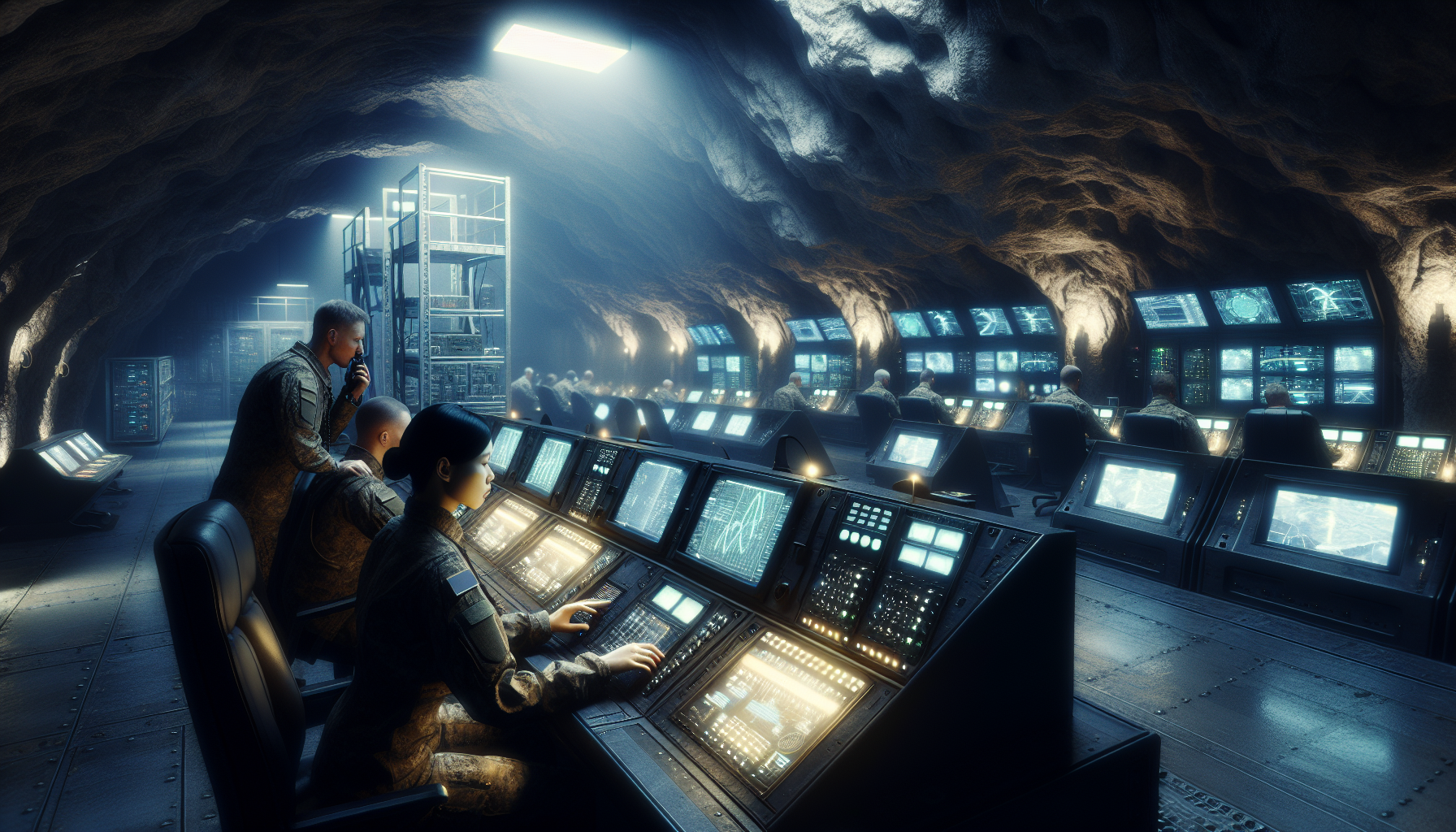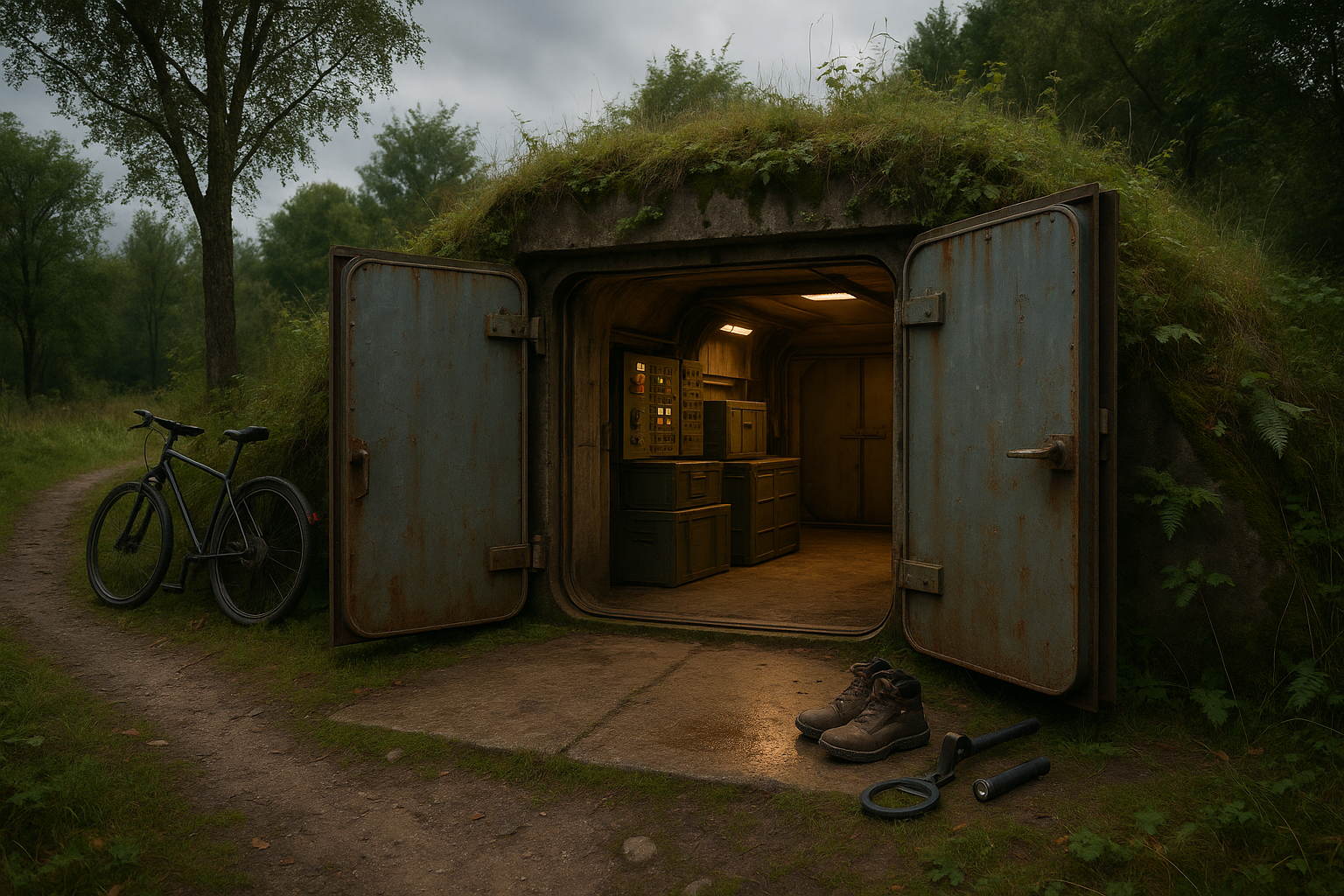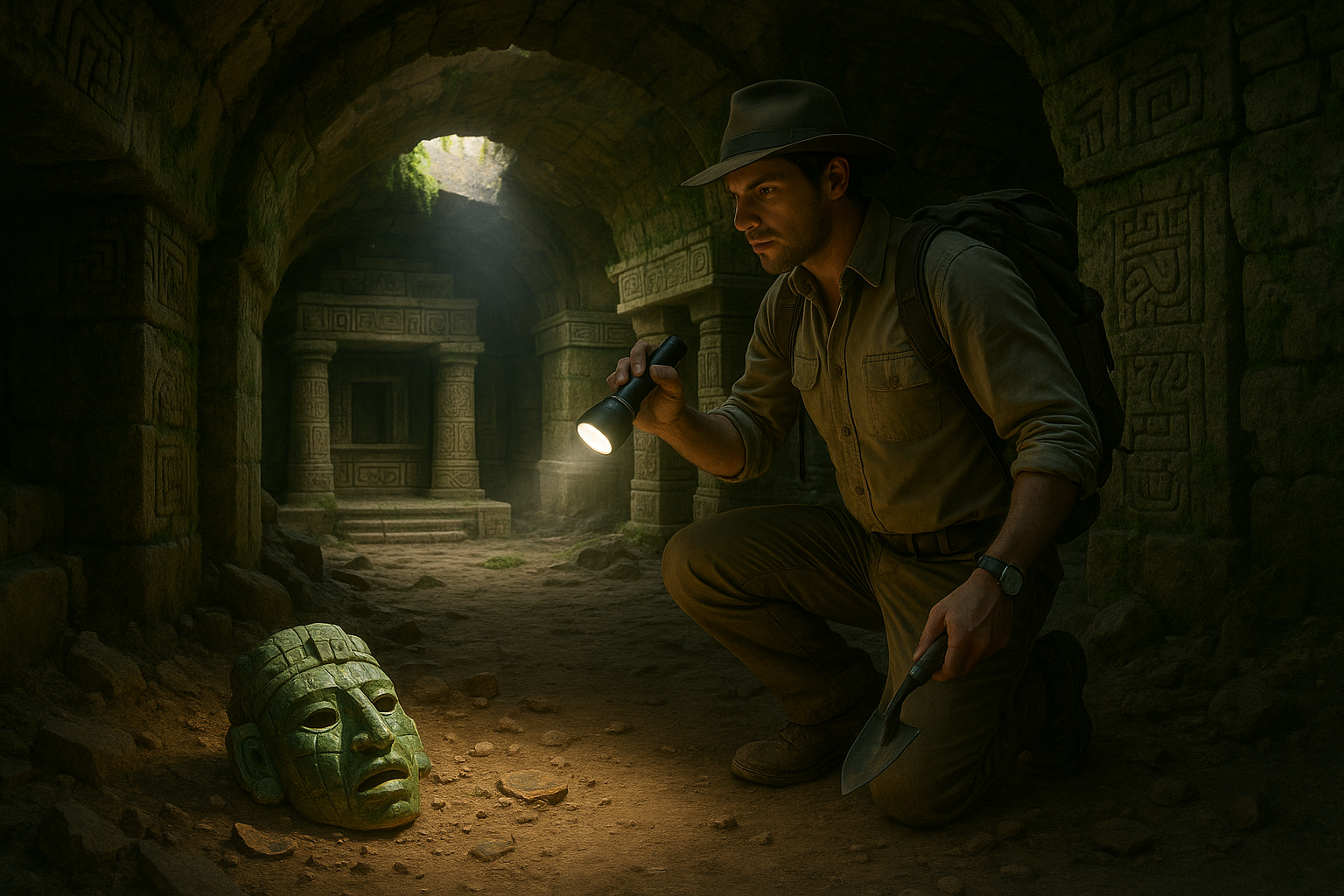In a world increasingly defined by transparency and openness, there remain pockets shrouded in secrecy, veiled by layers of mystery that captivate the imagination. One such enigma lies beneath our feet: underground command posts. These subterranean sanctuaries have long been the nerve centers for military operations, government strategies, and emergency responses. They are cloaked in a mystique that few outsiders can penetrate, often sparking our curiosity about what lies behind those fortified doors. 🕵️♂️ As we embark on this journey into the depths of the earth, we aim to shed light on these hidden hubs of power, unraveling the stories, technologies, and strategies that define their existence.
Our exploration begins with a historical perspective, tracing the origins of underground command posts to pivotal moments in history. From the Cold War era, when fears of nuclear annihilation necessitated the creation of impenetrable bunkers, to their evolution in the face of modern threats, these structures have been integral to national security. We will delve into iconic examples such as the Cheyenne Mountain Complex in the United States and the UK’s Pindar beneath the streets of London. By examining their construction, technological advancements, and the strategic minds behind their operation, we offer a glimpse into how these command posts have adapted to the ever-changing global landscape. 🌍
But this article is not just about architecture and history. We will also explore the human element within these underground worlds. What is it like to work in an environment designed to be cut off from the world above? How do those stationed within maintain a sense of normalcy amidst the pressure and isolation? Through interviews with former personnel and insights from experts, we aim to bring to life the day-to-day realities faced by those who have dedicated their lives to operating in these secretive spaces. Moreover, as technology advances, we will investigate how artificial intelligence and cybersecurity measures are revolutionizing the way these command posts function, ensuring their relevance in the digital age. 🤖 Join us as we uncover the mysteries of these subterranean fortresses, revealing a world that is both hidden and yet vitally connected to the surface above.
The Historical Context of Underground Command Posts
Underground command posts have been a critical component of military strategy since the advent of modern warfare. These fortified installations, often hidden deep beneath the earth’s surface, serve as nerve centers for command and control during conflicts. Their development can be traced back to World War II, a period that saw significant advancements in military technology and strategic planning. During this era, the threat of aerial bombardment necessitated the creation of secure locations where military leaders could operate safely, even in the midst of relentless enemy attacks.
The Cold War era further expanded the need for these subterranean fortresses. The constant threat of nuclear war led to the construction of elaborate underground bunkers designed to withstand atomic blasts. Countries like the United States and the Soviet Union invested heavily in the development of these command centers, often shrouding their existence in secrecy. These facilities not only provided protection but also housed the sophisticated communication equipment necessary to maintain control over military operations and nuclear arsenals.
Today, while the threat landscape has evolved, underground command posts remain relevant. Modern installations have integrated cutting-edge technology to ensure resilience against cyber threats and other contemporary challenges. Understanding the historical context of these installations helps appreciate their ongoing significance in military strategy.
Technological Innovations in Modern Underground Command Posts
Technological advancements have revolutionized the capabilities of underground command posts. These facilities now incorporate state-of-the-art communication systems, allowing for seamless coordination across vast distances. For instance, secure satellite links enable real-time communication with units in the field, ensuring that commanders have the most up-to-date information at their fingertips. This technological edge is crucial for decision-making in high-stakes scenarios, where every second counts.
Moreover, modern command posts are equipped with advanced computing systems capable of processing vast amounts of data. These systems utilize artificial intelligence and machine learning to analyze intelligence reports, predict enemy movements, and assess potential threats. The integration of these technologies enhances situational awareness, providing military leaders with a comprehensive view of the battlefield. This allows for more informed strategic decisions, potentially altering the course of engagements.
Another significant innovation is the development of hardened infrastructure designed to withstand not only physical attacks but also cyber intrusions. Cybersecurity measures have become a focal point, with advanced encryption and defensive protocols safeguarding critical systems against hacking attempts. This ensures the integrity of command and control operations, even in the face of sophisticated cyber threats.
Comparative Table: Technological Features of Past vs. Modern Command Posts
| Feature | Past Command Posts | Modern Command Posts |
|---|---|---|
| Communication Systems | Basic radio and wired communication | Secure satellite and digital networks |
| Data Processing | Manual analysis and limited computing | AI and machine learning for real-time analysis |
| Infrastructure | Primarily physical fortification | Hardened against cyber and physical threats |
The Strategic Importance of Underground Command Posts
Underground command posts play a pivotal role in national defense strategies. Their strategic importance lies in their ability to function under extreme conditions, providing a secure and stable environment for military leadership during crises. These facilities are designed to operate autonomously, with backup power supplies, water reserves, and food stocks ensuring sustained operations even when cut off from external support.
Furthermore, the geographical location of these posts is often strategically chosen to maximize their effectiveness. Positioned in remote or fortified areas, they minimize vulnerability to enemy attacks. The secrecy surrounding their exact locations adds an additional layer of security, complicating enemy efforts to neutralize them. This strategic positioning is crucial for maintaining command continuity in the event of a large-scale attack.
Another aspect of their strategic importance is the psychological impact on adversaries. The existence of these command posts serves as a deterrent, signaling a nation’s readiness and capability to continue operations despite enemy efforts. This psychological edge can influence enemy decision-making, potentially deterring aggressive actions due to the perceived futility of targeting a well-protected command infrastructure.
Video Resource: Inside an Underground Command Post
For a deeper understanding of how these facilities operate, watch this insightful video: Inside an Underground Command Post (Channel: Military Tech). This video provides a rare glimpse into the intricate workings of a modern command post, showcasing the technology and strategies that ensure its effectiveness.
Challenges and Future Prospects for Underground Command Posts
Despite their advantages, underground command posts face several challenges. One major issue is the cost of construction and maintenance. These facilities require significant financial investment, which can strain defense budgets. As technology continues to advance, the need for regular upgrades to infrastructure and systems further escalates costs. Balancing these financial demands with other defense priorities is a constant challenge for military planners.
Another challenge is the evolving nature of warfare. As adversaries develop new strategies and technologies, underground command posts must adapt to remain effective. This requires continuous innovation and foresight, as well as a willingness to embrace emerging technologies that may enhance operational capabilities. The integration of cyber defense measures and the development of resilient communication systems are critical areas of focus in this evolving landscape.
Looking to the future, the role of underground command posts is likely to expand. With the increasing importance of cybersecurity and information warfare, these facilities will play a crucial role in protecting national interests. The development of networked command systems, capable of integrating data from various sources, will enhance decision-making and operational efficiency. As nations continue to recognize the strategic value of these installations, investment in their development and modernization will remain a priority.
Call to Action: Explore More About Underground Command Posts
- Stay informed about military advancements by subscribing to defense journals.
- Participate in webinars and seminars focused on modern warfare strategies.
- Engage with military history documentaries to understand the evolution of command posts.

Conclusion
In conclusion, exploring the enigmatic world of underground command posts reveals a fascinating blend of history, architecture, and strategic ingenuity. Throughout this article, we’ve journeyed through the depths of these clandestine structures, unraveling their purpose, construction, and evolution over time. From their inception during the tumultuous periods of the 20th century to their continued relevance in today’s complex geopolitical landscape, underground command posts remain a testament to human resilience and innovation.
One of the key points discussed was the historical context that gave rise to these subterranean fortresses. During World War II and the Cold War, the threat of aerial bombardments and nuclear warfare necessitated the development of secure and concealed locations where military and political leaders could operate without fear of direct attacks. These command posts were often equipped with cutting-edge technology for their time, designed to withstand catastrophic events and ensure continuity of operations.
The architectural and engineering marvels of these underground facilities were another focal point. From their robust construction to the intricate design features that prioritize security and functionality, each command post is a unique blend of art and science. The use of natural geological formations, reinforced concrete, and advanced ventilation systems highlights the meticulous planning involved in their creation. Notable examples include the Cheyenne Mountain Complex in the United States and the Burlington Bunker in the United Kingdom, each offering a glimpse into the strategic priorities of their respective nations.
Moreover, the article shed light on the technological advancements that have transformed these command posts over the decades. Initially reliant on analog communication systems, they have since integrated digital technology, enhancing their operational capabilities. This evolution underscores the adaptability of these structures to meet the ever-changing demands of modern warfare and crisis management.
The secrecy surrounding underground command posts has also been a subject of intrigue. While some have been declassified and repurposed for civilian use, others remain shrouded in mystery, fueling speculation and curiosity. This aura of secrecy not only serves strategic purposes but also captures the imagination, prompting further exploration and research into these hidden worlds.
The importance of understanding underground command posts extends beyond mere historical interest. In today’s uncertain global climate, these facilities continue to play a crucial role in national security and emergency preparedness. As technological advancements continue to reshape the landscape of warfare and crisis response, the strategic value of these command posts cannot be overstated. They symbolize a nation’s commitment to safeguarding its people and interests, providing a secure environment for decision-making during times of crisis.
As we conclude our exploration, it’s essential to reflect on the broader implications of these underground sanctuaries. They remind us of the lengths to which humanity will go to protect itself and ensure survival in the face of existential threats. Furthermore, they serve as a reminder of the importance of innovation, adaptability, and preparedness in an ever-evolving world.
We encourage you, our readers, to delve deeper into the subject, share your thoughts, and engage with this fascinating topic. Whether through further research, discussion, or simply sharing this article with others, your involvement can help unravel more mysteries and foster a greater appreciation for the strategic ingenuity behind these subterranean structures.
For those interested in learning more, we recommend exploring resources from credible institutions and historical archives. Websites like the National Archives (link) and the Defense Technical Information Center (link) offer valuable insights and access to declassified documents that can enhance your understanding of these command posts.
In closing, the world of underground command posts is a testament to human ingenuity and the perpetual quest for security. As we continue to navigate the challenges of the 21st century, let us draw inspiration from these structures, embracing the values of resilience, innovation, and collaboration. Together, we can unlock new possibilities and face the future with confidence and determination. 🌍🔍
Thank you for joining us on this journey into the depths of history and strategy. We look forward to your insights and contributions as we continue to explore the hidden wonders of our world.
Toni Santos is a visual storyteller and artisan whose work explores the quiet power of what lies beneath. With a deep fascination for subterranean and hidden architecture, Toni uncovers the layers, voids, and forgotten spaces that shape our built environment from the shadows.
His art is a journey through the unseen — from ancient underground chambers to sealed passageways, service tunnels, and foundations buried in time. Each creation tells a story of silence, secrecy, and structure — revealing how absence and concealment can be just as meaningful as what’s visible above ground.
Whether working through visual compositions, architectural studies, or symbolic handcrafted pieces, Toni captures the soul of hidden spaces. His work bridges art and archaeology, blending design with discovery. Trained in visual design and traditional techniques, Toni creates with intention. His pieces don’t just depict — they interpret, inviting viewers to rethink what space, memory, and architecture mean when they’re hidden from view.
As the creative force behind Vizevex, Toni shares this perspective through curated visual narratives, symbolic collections, and interpretive essays that give voice to the quiet geometries beneath our feet.
His work is a tribute to:
The mystery of spaces built to be forgotten
The symbolism embedded in foundations, voids, and passageways
The timeless connection between human intention and hidden structure
Whether you’re an artist, an urban explorer, or someone fascinated by the unseen frameworks that support our world, Toni invites you into a realm where architecture becomes myth — one corridor, one layer, one buried story at a time.





